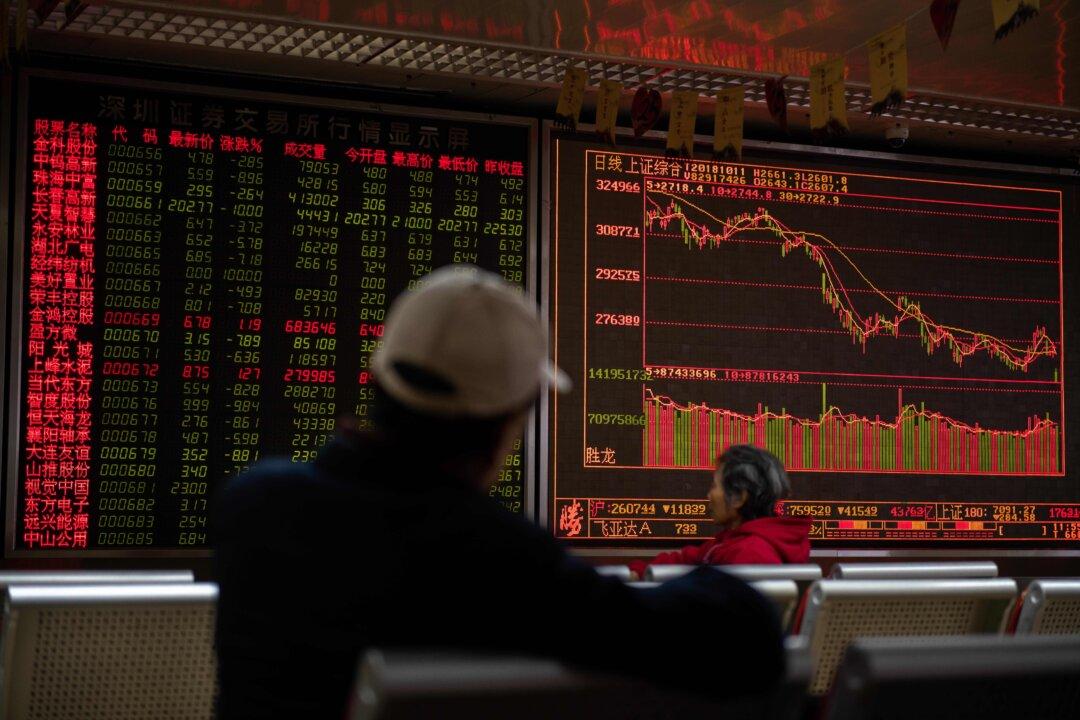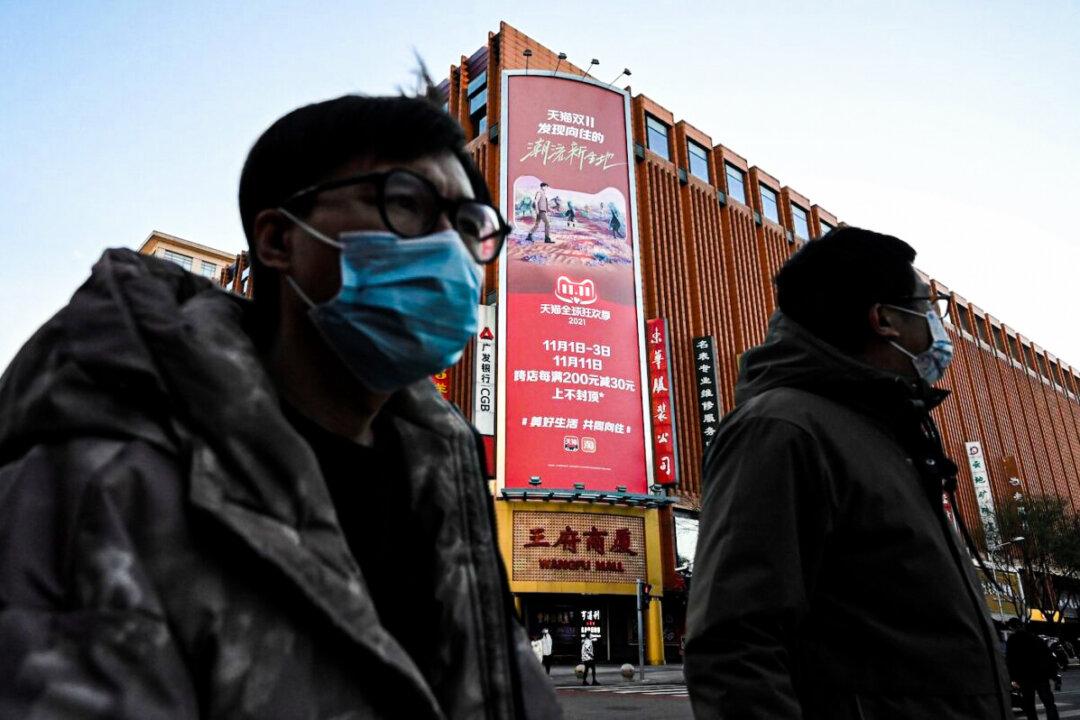Since the beginning of the Sino–U.S. trade war in March 2018, the Chinese economy has been on the decline.
The Chinese communist regime itself even admitted that difficulties are numerous, with so-called structural reforms unable to be initiated. However, by the end of the third quarter in 2018, China’s foreign economic indicators began to show a prosperous trend. The scale of foreign exchange reserves and foreign investment on average have maintained a slight growth and continue to trend up.
As a result, during trade negotiations with the United States, China’s attitude has also become increasingly tough.
This state can be summarized with the Chinese economy being “hot on the outside” and ”cold on the inside.” To analyze the impact this state has on future of the Chinese economy, one must first seek the underlying reasons to see whether such a fortuitous circumstance can cure the Chinese economy.
Growth of FX Reserves and Foreign Investment Brings the Aid of Three “Nobilities”
As of the end of January, China’s foreign exchange reserves stood at $3.09 trillion, having re-ascended for three consecutive months. At this point, China’s financial regulatory agencies that have been staring unblinkingly at the “gray rhinoceros” that is foreign exchange (FX) reserves are finally able to take a breather.
Another foreign economic indicator is foreign investment. China’s Foreign Investment Administration within the Ministry of Commerce announced that the country’s foreign investment in 2018 reached $135.0 billion, a record high. From January to February 2019, 6,509 foreign-invested enterprises were newly established nationwide; the actual use of foreign capital was $21.7 billion, an increase of 3.0 percent over the same period (excluding banking, security, and insurance data).
Affected by factors such as the Sino–U.S. trade war, global cross-border investment didn’t perform well in 2018. According to a United Nations Conference on Trade and Development report, total foreign direct investment in the first half of 2018 plummeted 41 percent over the same period, and fell 69 percent for developed countries. However, in the second half of the year, the Chinese stock market, which has made China’s stockholders’ wealth evaporate several times, has ushered in a “spring of foreign investment.” According to statistics from financial services provider Huixin, total foreign funds entering China from Hong Kong and foreign countries in 2018 to purchase A-shares were 294.2 billion yuan, an increase of nearly 50 percent over the same period in the previous year. According to central bank data, net inflows of foreign capital in China’s bond market in 2018 was about $100 billion, accounting for 80 percent of the foreign capital inflows into emerging markets.
With the ongoing Sino–U.S. trade war and the weak growth of the Chinese economy, the continuous flow of foreign capital into the Chinese market has brought great comfort to Beijing, which believes this to be proof that China’s capital markets are receiving international recognition—and the key to recognition lies in receiving rescue from the so-called “market nobility.”
“Market nobility” refers to two major stock market index companies. In 2018, when China’s economy was declining, the world’s largest index provider MSCI took the lead by announcing in May that China’s A-shares would officially be added into the MSCI Emerging Markets index. The world’s second-largest index provider FTSE Russell announced in September that it officially included China’s A-shares in the “FTSE Global Equity Index Series.”
In January 2019, the Barclays Global Aggregate Index announced the inclusion of Chinese government bonds and policy bank bonds into its widely followed bond index, with yuan-denominated bonds set to become the fourth largest after the dollar, euro, and yen.
It’s estimated that Chinese bonds will be added into the Barclays Index and will lead to more than $700 billion inflows of foreign investment over the next five years. These three institutions are endorsing China’s stock and bond market with their own credibility, making the Chinese capital markets a must-hold for global investors’ asset allocation.
American Politics Becomes the Barometer of International Economics
International capital is optimistic about China; this is entirely caused by the instability of domestic politics in the United States.
Before the U.S. midterm elections in November 2018, the Sino-U.S. trade war caused the world to look down on the Chinese market. Foreign capital withdrew, or indicated that they were going to withdraw in succession, and the global industrial chain reset had begun.
However, after the midterm elections, the Democratic Party gained a majority of seats in the House of Representatives. Since then, the Democratic Party instigated “Russia collusion” as a threat to impeach the president, and the prediction that Trump could voluntarily resign from office in exchange for not being impeached became a theme of mainstream U.S. media and political commentary.
This type of U.S. political chaos has not only been a boon for China in the trade war, but also international capital. In 2018, among the major sources of investment in China, South Korea, Singapore, the United States, and the European Union increased their investment in China by 36 percent, 8 percent, 44 percent, and 39 percent respectively. Funds from the United States increased the most.
Using the United States as an example, in January 2018, the Trump administration introduced a large tax reform—a tax cut of up to $1.5 trillion. This was expected to help boost corporate spending and increase employment. At the time, Trump had predicted that companies would remit $4 trillion of overseas profits. However, due to the strengthening political opposition domestically, only a total of $571 billion was remitted in the first three quarters, and the trend is seen to be decreasing.
The intensification of political conflict has inevitably made U.S. capital take a wait-and-see approach to investing, which has seriously weakened the impact this large-scale fiscal stimulus could have on corporate investment. According to a Goldman Sachs study, in 2018, capital mostly flowed to the stock market and total repurchase of U.S. stocks exceeded $1 trillion.
In late January 2019, a quarterly business survey published by the National Business Economic Association pointed out that although some companies reported that they had accelerated investment due to tax cuts, 84 percent of respondents said that the tax reform had no impact on their recruitment or investment plans.
On March 24, the Mueller report, which cost taxpayers $25.2 million and summoned 2,800 people and 500 witnesses, concluded that special counsel Robert Mueller’s investigation didn’t find conclusive evidence of collusion between Donald Trump and Russia during the 2016 presidential election.
But the Democratic Party has indicated that it would continue to look for collusion clues. Therefore, my view is that before the 2020 election results are announced, U.S. capital will not return on a large scale since the Democratic Party’s socialist campaign platform, with the big welfare benefits it promises to voters, could bring about high taxes and cast a shadow over the U.S. business community.
Although business and high-tech circles were strong supporters of Hillary Clinton, they definitely are not fans of Bernie Sanders and others in the socialist camp. They do not accept Trump, but they are more afraid of the increasingly socialist Democratic Party.
Facing ‘Cold’ on the Inside, China Has No Plans to Turn Up the Heat
One can tell from reports on China by various Western economic and financial media, as well as the EU’s attitude towards China, that China’s economic development prospects are still regarded as an important factor in the development of the global economy.
Of course, China also understands that the ultimate goal of the West is not to topple China, but to force it to go on the right track of a market economy. The U.S business community’s opposition of the U.S. trade war with China, but firm support of Trump in forcing China to change its structurally unfair trade behavior, is evidence of this.
Could China possibly satisfy the West’s desires?
Objectively speaking, China wants to do this, but it cannot. This year at the Two Sessions political meetings, the Chinese Communist regime also offered various solutions to help boost the economy. The idea was to strategically increase local debts while ramping up three major stimuli: reducing taxes, promoting consumption, and restarting infrastructural construction.
But the efficacy of these goals is somewhat contradictory. Taking tax cuts as an example, the 2 trillion yuan in enacted tax cuts truly expressed the Chinese regime’s eagerness and sincerity in improving economic vitality. But increased infrastructure investment means that government spending will also increase. Social security, the military budget, and other expenses have all put constraints on the Chinese regime’s finances. In addition to the regulation that financial deficit be maintained at previous years’ levels, there’s almost no room in the budget for tax cuts.
Promoting consumption will also be quite difficult. The National Development and Reform Commission and 10 other ministries and commissions jointly issued the “Implementation of Optimizing Supply to Promote Steady Growth in Consumption and Promote the Formation of a Strong Domestic Market (2019),” with the key of boosting rural consumption.
However, China’s wealth distribution is extremely unbalanced. Even with Chinese leader Xi Jinping’s approval, a low-income population accounting for 68 percent of the total population remains trapped by low disposable income, and will be unable to expand consumption.
Increasing infrastructure construction is a tactic that goes back ten years. Over the years, the structural problems within China’s economy have been market saturation and overcapacity. The 4 trillion yuan spent in 2009 was mainly put into manufacturing, infrastructure, and real estate.
New excess capacity will be added, which exacerbates the imbalance between supply and demand—it will only make matters worse. What can’t be compared with ten years ago is that the besieged Chinese economy back then relied on the real estate industry to rescue the Chinese economy. During this round of economic stimulus in 2019, the tired real estate industry is no longer able to pull up China’s economy. Not to mention that China’s per capita debt is about 170,000 yuan, and most people have no money in their pockets.
Looking at the history of modern economic development in the world, no country whose economy was deeply entangled in structural problems has ever succeeded in being revitalized by solely relying on foreign capital.
What’s more, when foreign capital flocks into a country’s stock and bond markets, its purpose is not to help a country boost its economy, but to follow speculative criteria to arbitrage. The domestic political environment of the United States has decided that China still has a 20-month opportunity period.
During this period, if China can’t cure its “inner cold” disease with “external heat,” it is bound to fall back into a siege.
He Qinglian is a prominent Chinese author and economist. Currently based in the United States, she authored “China’s Pitfalls,” which concerns corruption in China’s economic reform of the 1990s, and “The Fog of Censorship: Media Control in China,” which addresses the manipulation and restriction of the press. She regularly writes on contemporary Chinese social and economic issues.




